Last Updated on November 29, 2023 by Cathy
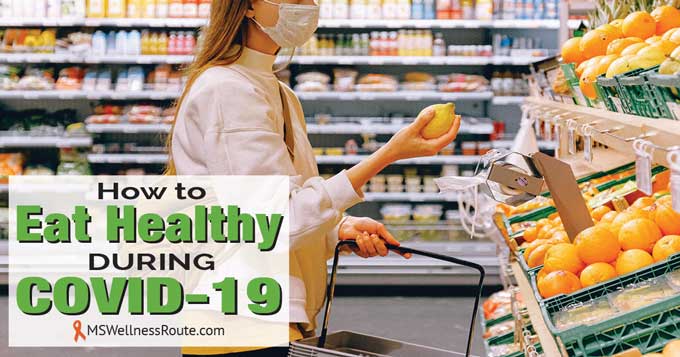
Times are tough right now with the COVID-19 pandemic. Across the globe there are stay-at-home orders, schools closed, and businesses closed. Plus, we’re dealing with empty grocery store shelves. A lot of people are wondering how they can keep eating healthy during this scary time.
Fortunately, what we eat isn’t what most people eat. Foods that are disappearing the fastest include processed foods. Like canned goods, boxed meals, and frozen dinners. Natural and organic foods are generally the last to go.
However, for many people, the cost is a major factor. Like many others, my husband and I are dealing with a “stay-at-home order.” It caused many businesses in our area to shut down and a loss of income for many families including ours.
This can cause fear of how they will pay their bills or feed their families. It’s important not to panic and get stressed out. Multiple sclerosis (MS) can flare up when you’re stressed. Stay calm and take several deep breaths. – You don’t want your immune system any more compromised than it already is.
Shopping During COVID-19
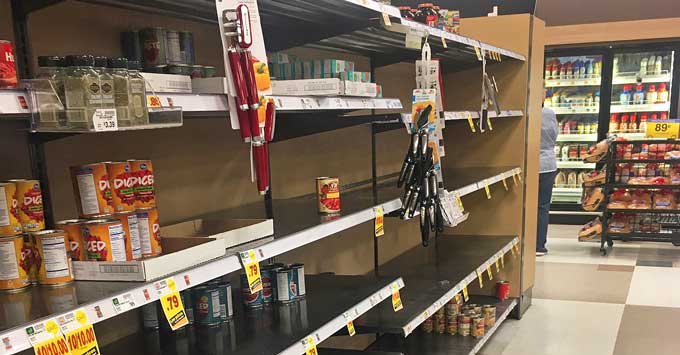
With all the negative news about COVID-19, it’s caused panic and a shortage of food at grocery stores. Even ordering food online has gotten a lot harder. It caused some people to hoard food which caused more people to panic and start hoarding food. – Don’t fall into this trap.
Right now shopping with a grocery list isn’t really practical since you won’t know what will be available. Instead, go with a plan that you’ll be eating mostly vegetables and a small amount of fruit. Include a protein like wild-caught fish, pasture-raised poultry, and grass-fed meat.
Since everyone should be staying home buy enough food to last a little longer. Granted, most produce doesn’t last more than a week but you can either buy already frozen or freeze it yourself. Since I drink smoothies every day and leafy greens don’t last that long, I’ve been freezing my smoothies. It’s so easy!
After mixing your smoothie pour it into glass jars like Mason jars and store them in the freezer. Remember to leave 1-1/2 inches of space in order for the smoothie to expand as it’s freezing. Otherwise, the jar will shatter leaving a huge mess. You can even use silicone ice cube trays or muffin tins.
Then mark it with the date you made it. Hopefully, it won’t stay in your freezer for more than three months.
What to Buy
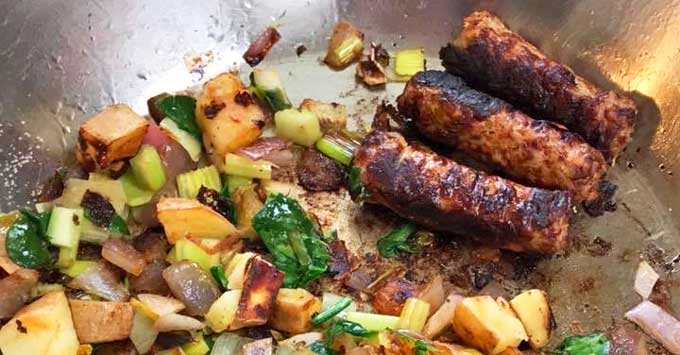
Since you never know what is going to be available at the grocery store here are some sample meal ideas:
Breakfast –
- Fruit
- Smoothie
Lunch –
- Large salad drizzled with lemon juice mixed with raw honey
- Sauerkraut
- Slices of roasted chicken
Dinner –
- Seasoned roasted broccoli, cauliflower, and carrot mixed vegetables
- Lettuce-wrapped grass-fed burger or skillet meals
Here are some snack ideas:
- Almond crackers
- Avocados
- Black olives
- Fruit
- Nuts
- Vegetables
Avoid the Dirty Dozen if Possible
If you’re having to watch your spending you can still eat healthy when you are on a tight budget. Since organic foods are more expensive, go ahead and buy non-organic. Eating non-organic fruits and vegetables is better than not eating them at all.
If you can afford it, go ahead and buy all organic. Or at least buy organic if it’s on the Environmental Working Group’s (EWG) “Dirty Dozen” list. These are fruits and vegetables that have the highest amount of pesticide residues.
Dirty Dozen:
- Strawberries
- Spinach
- Kale
- Nectarines
- Apples
- Grapes
- Peaches
- Cherries
- Pears
- Tomatoes
- Celery
- Potatoes (not paleo)
Since strawberries are at the top of the list, buy organic instead of non-organic. If money is a concern buy frozen organic strawberries instead of fresh. Frozen strawberries are generally cheaper than fresh and they are free from pesticides. Plus, organic strawberries taste much better than non-organic ones.
This year EWG decided to include raisins even though they don’t qualify for the Dirty Dozen list. This list doesn’t include processed foods like raisins. They found 99% of conventional raisins tested positive for at least two pesticides. Some had up to 26 different pesticides on a single raisin. That is more than strawberries which have up to 22 different pesticides on a single strawberry.
Grow a Garden
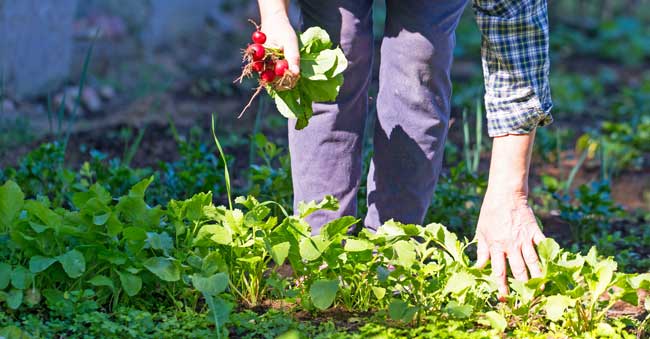
Now is a great time to grow a garden even if you have never grown one before. There are many vegetables that are easy to grow. If you’re limited on space or you can’t bend down to the ground consider container gardening.
Easy to grow vegetables:
- Carrots
- Cucumbers
- Onions
- Radishes
- Tomatoes
- Yellow summer squash
Leafy greens to grow:
- Arugula
- Collard greens
- Dandelion greens
- Kale
- Lettuce
- Mustard greens
- Scallions
- Spinach
- Swiss chard
- Watercress
Strawberries are also easy to grow. Some varieties produce fruit in only in the spring others produce fruit in both spring and fall. Plus, strawberries come back next year. But they only live for about three years so eventually, you’ll have to plant new ones.
Grow Your Own Herbs
Herbs are very expensive to buy at grocery stores. To save money grow them yourself. Plant them in containers near your door. Or plant them in smaller containers to place on your kitchen window sill for easy access. Plus, herbs are very fragrant so they help to keep pests away.
Grow herbs like:
- Basil
- Cilantro
- Mint
- Oregano
- Parsley
- Rosemary
- Thyme
I have a garden site and container gardening. I live in a rural area with lots of wild animals like rabbits, ground squirrels, and gophers. So I have to take extra precautions to keep them out of my garden.
What I found that works to repel unwanted pests:
- Beer, pour into a bowl and leave it in your garden overnight to kill slugs and snails
- Castor oil repellents to repel gophers
- Coffee grounds to repel bugs, slugs, and snails
- Herbs like oregano and rosemary
- Lavender
- Marigolds
Quick Links To Information In This Post:
5 Tips To Eat Healthy On A Budget
How The Coronavirus Impacts MS
Easy One-Pan Rosemary Chicken With Veggies
Super Nutrient-Dense Green Smoothie
Take Advantage of the Special Hours
Some grocery stores have special hours for senior citizens and people who are at a higher risk. MS doesn’t increase your risk for COVID-19. But having an infection could cause a temporary worsening of MS symptoms.
Several years ago I caught the flu which caused me to get a fever. I used to suffer from heat intolerance which caused my body to shut down and my legs to quit working. As my body temperature went up from the flu my legs became paralyzed, I couldn’t even roll over in bed.
According to the National MS Society:
The CDC identifies certain conditions as placing people at “higher risk” for infection or complications from COVID-19. This includes people with neurological conditions, such as MS. MS itself does not increase the risk of getting COVID-19, however, certain factors associated with your MS may increase your risk of infection or complications:
- Taking certain disease-modifying therapies
- Chronic medical conditions, such as lung disease or heart disease
- Significantly restricted mobility, such as needing to spend most of your day seated or in bed
- Age 60 or older
Having MS puts you in the high-risk category. This allows you to go to the grocery store during these special hours. Allowing you to buy food right after stores are cleaned and freshly stocked. – Take advantage of this!
How to Eat Healthy During COVID-19
Eat a healthy diet to avoid illness and COVID and anytime is crucial for supporting the immune system and reducing the risk of viral infections. This includes all viruses including the cold and flu. Focus on a well-balanced, one that includes plenty of fruits and vegetables. These foods provide essential vitamins, minerals, and antioxidants that strengthen the immune system.
Incorporate immune-boosting foods like citrus fruits, berries, leafy greens, garlic, and ginger into your meals. Stay hydrated by drinking plenty of water throughout the day. Avoid processed foods, sugary snacks, and excessive amounts of salt, as they can weaken the immune system.
Proper food safety practices should also be followed, including thorough washing of fruits and vegetables, cooking meats thoroughly, and avoiding cross-contamination. Finally, maintaining a healthy lifestyle that includes regular exercise, enough sleep, stress management, and good hygiene practices will further support your overall immune health and reduce the risk of viral infections.
Stay calm and stay safe.
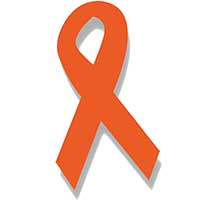
Free Wellness Library!
Subscribe for free and I’ll send you the password to my secret library filled with many printables for your wellness journey.
Want to remember this health tip? Pin it to your favorite Pinterest board!
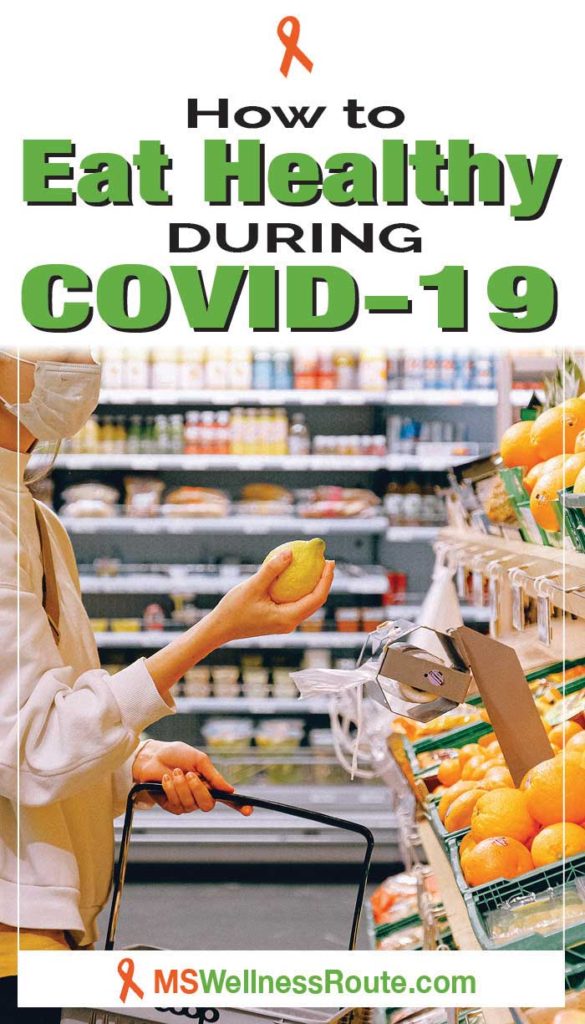
Resources:
https://www.nationalmssociety.org/coronavirus-covid-19-information
How to Eat Healthy During COVID-19





